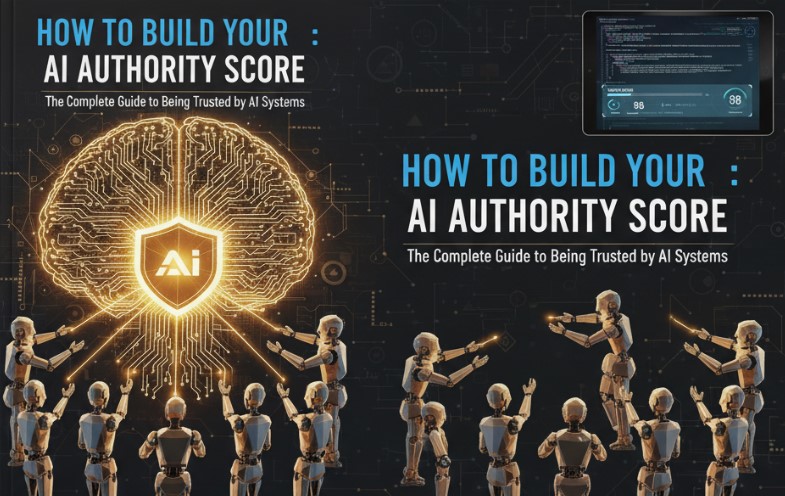Published by NewsPR Today | June 2025
The notification hits your inbox or your social feed: “Google is rolling out a new core algorithm update.” For many site owners, those words trigger a wave of anxiety. It’s time to compulsively check analytics, brace for volatility, and pray the traffic chart doesn’t nosedive.
This reactive, fear-based cycle is a staple of the SEO industry. But what if it’s the wrong approach? What if, instead of bracing for impact, you could look forward to these updates as opportunities?
There are sites that don’t just survive core updates; they actively gain traffic and visibility from them. They aren’t using secret tricks. They are built on a durable, proactive philosophy we’ll call the Anti-Update Framework.
This isn’t about chasing the latest ranking factor. It’s about building a digital asset so fundamentally aligned with Google’s long-term mission that each update further solidifies its position, often at the expense of competitors who take shortcuts.
The Flaw of Chasing Algorithms
For years, SEO has often been a cat-and-mouse game. Google releases a guideline, and some marketers find a way to exploit it. Keyword density, link schemes, article spinning—the list of retired tactics is long.
But Google’s approach has matured. Updates are no longer just about penalizing specific manipulative tactics. They are about getting better at understanding and rewarding quality in a holistic way. Systems like the Helpful Content System don’t look for one negative signal; they evaluate a site’s content library as a whole to determine if its primary purpose is to help users or to rank on search engines.
As Google’s own documentation on the Helpful Content System states, content created primarily for search engine traffic is “strongly correlated with content that searchers find unsatisfying.”
Chasing the algorithm is a losing game because you’re always one step behind. The Anti-Update Framework is about getting ahead of the game by focusing on the one thing that never changes: providing genuine value to a human user.
The Core Philosophy: What Does Google Want?
Google’s ultimate goal is to provide a searcher with the most helpful, reliable, and satisfying answer to their query in the shortest amount of time. To do this, they’ve built their systems to identify signals of human value.
Fortunately, they are very open about what they look for. The entire Anti-Update Framework can be built upon two foundational Google concepts:
- E-E-A-T (Experience, Expertise, Authoritativeness, and Trustworthiness): This is the bedrock of content quality, originating from Google’s Search Quality Rater Guidelines (SQRG) (a must-read 170+ page document that outlines exactly what Google instructs its human raters to look for).
- Helpful, Reliable, People-First Content: This is the practical application of E-E-A-T, focusing on user intent and satisfaction.
A site that excels in these areas isn’t just “safe” from updates; it becomes the benchmark that Google’s algorithm strives to find and reward. When an update rolls out that better identifies low-quality, unhelpful, or untrustworthy content, sites built on this framework naturally rise in the rankings.
The Anti-Update Framework: The Four Pillars
This framework isn’t a checklist of technical fixes; it’s a set of guiding principles for every decision you make about your website.
Pillar 1: Demonstrable Experience and Expertise (The “E” and “E” in E-E-A-T)
The age of generic, aggregated content is over. Google’s addition of “Experience” to its E-A-T acronym was a seismic shift, explicitly stating a preference for content created by someone with life experience on the topic.
How to Implement This Pillar:
- Show, Don’t Just Tell: Instead of writing a generic review of a product, show yourself using it with original photos and videos. If you’re a gardener, show your actual garden, mistakes and all. This is what Google means by “content that shows you’ve used a product or visited a place.”
- Create Un-outsourceable Content: Write from a first-person perspective. Share personal anecdotes, case studies with real (even if anonymized) data, and unique insights that could only come from doing the work. This is your moat against generic AI content and low-cost content farms.
- Authoritative Bios and Bylines: Every article should feature a clear author with a detailed bio that showcases their credentials, experience, and links to their social profiles or other relevant publications. For YMYL (Your Money, Your Life) topics, this is non-negotiable.
Pillar 2: Obsessive User-Centric Content (The Helpful Content Mandate)
Ask yourself one question before creating any piece of content: “Will someone reading this leave feeling like they’ve had a satisfying experience and had their question fully answered?”
This goes beyond just matching a keyword. It’s about satisfying user intent so completely that the user has no reason to go back to Google. This is often referred to as creating the “last click” resource.
How to Implement This Pillar:
- Answer the Full Question: Use tools and Google’s “People Also Ask” section to understand the follow-up questions users have and answer them proactively within your content.
- Avoid “SEO-First” Writing: Eliminate fluff and filler designed to hit a word count or stuff in keywords. As Google’s guide on people-first content advises, avoid “writing about things simply because they seem to trend.”
- Prioritize Clarity and Readability: Use simple language, short paragraphs, headings, bullet points, and bold text to make your content easy to scan and digest. A brilliant answer buried in a wall of text is not helpful.
Pillar 3: Unshakeable Authority and Trust (The “A” and “T” in E-E-A-T)
A user needs to feel safe and confident on your site. Trust is built through transparency, credibility, and external validation.
How to Implement This Pillar:
- Be Transparent: Have an easily accessible “About Us” page, clear contact information, and straightforward privacy policies and terms of service.
- Cite Your Sources: Link out to authoritative primary sources (like academic studies, official statistics, or industry experts) to back up your claims. This shows you’ve done your research and builds trust.
- Earn Quality Links and Mentions: True authority is built when other reputable sites in your niche link to you or mention your brand without you asking. This happens naturally when you execute on Pillars 1 and 2 by creating best-in-class, experience-driven content that others want to reference. This is what industry expert Lily Ray refers to as a key part of demonstrating E-E-A-T off-site.
Pillar 4: A Flawless Technical and User Experience
The best content in the world will fail if the user’s experience on the site is frustrating. This is where the technical foundation becomes critical. A poor user experience is a direct signal of a non-people-first approach.
How to Implement This Pillar:
- Master Core Web Vitals: Your site must be fast, responsive, and stable. Google’s Core Web Vitals (Largest Contentful Paint, First Input Delay/Interaction to Next Paint, and Cumulative Layout Shift) are direct measures of user experience.
- Be Mobile-First, Not Just Mobile-Friendly: The vast majority of searches are on mobile. Design and test your site’s experience on a mobile device first. Navigation should be effortless, and text should be readable without pinching or zooming.
- Minimize Intrusive Interstitials: A pop-up that covers the main content the second a user lands on a page is a classic example of a business-first, not a people-first, decision. Google has been clear about its dislike for these intrusive elements.
The Final Litmus Test
Before you publish any new piece of content or launch a site redesign, run it through this simple litmus test based on the framework:
- The Experience Test: Is it obvious this was written by a real human with hands-on experience?
- The Satisfaction Test: If I landed on this page from Google, would I need to hit the ‘back’ button to find a better answer?
- The Trust Test: Would I feel comfortable giving this website my credit card information or following its medical/financial advice?
- The Friction Test: Is the site fast, easy to navigate, and pleasant to use, especially on my phone?
If you can confidently answer “yes” to these questions, you’re not just practicing good SEO. You’re building an Anti-Update website. You’re creating a digital asset that Google is actively trying to find and reward. And when the next core update rolls around, you won’t be checking your analytics with dread—you’ll be checking them with anticipation.




